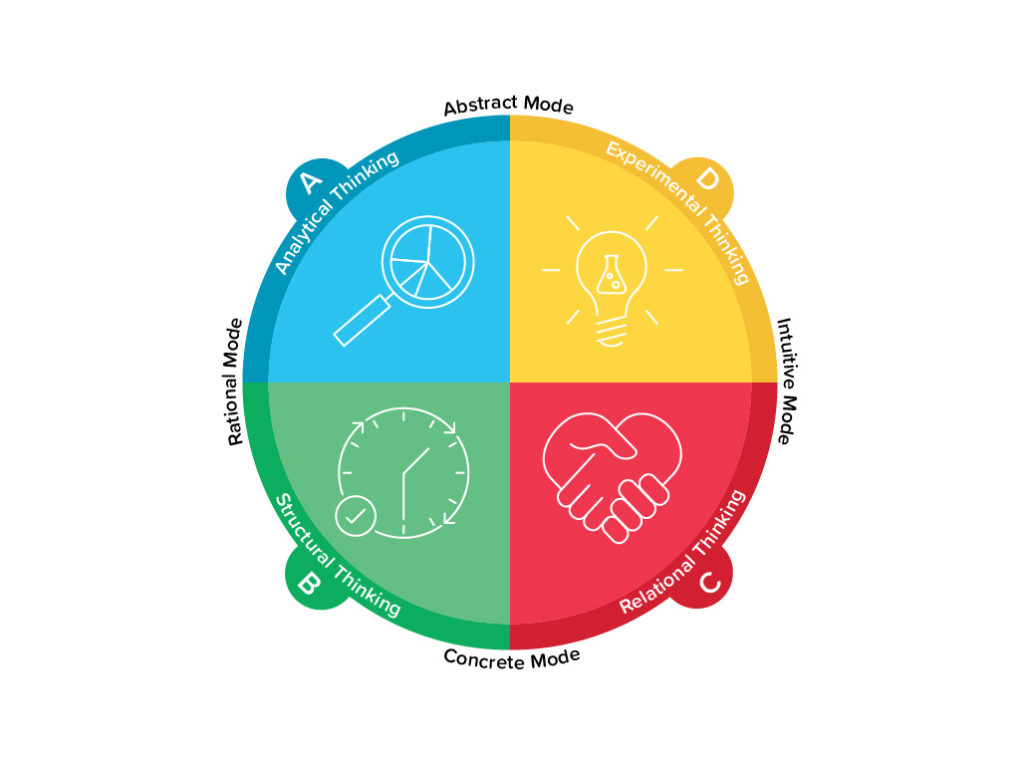What’s holding you back?
Whether it be in our personal or professional lives, there are a slew of habits that can hold us back from feeling or achieving our best. Whether it be shifting blame, having undefined goals or battling self-doubt, we could all make use of strategies to identify and overcome pernicious behaviours.
COVID-19 has brought upon society immediate and unavoidable change that has in one way (or many, many ways) challenged us all. Depending on how we’ve responded – and how our circumstances have changed – we’ve also had to deal with fear to varying degrees.
Fear can present in a number of different ways. Whether it’s fuelling anxiety, panic, depression, anger, or confusion, the coronavirus is instilling unpleasant emotions in many of us.
Fear (the reaction) is as old as life on earth. Of course, fear can be good…and it can be bad, depending on how we manage it. The amygdala, the part of the brain that controls fear, is essential in giving us that boost of adrenaline needed for a fight or flight response. But in the modern world (when we’re not faced with the same dangers as we once were) this part of the brain is becoming strained through different life and work stressors.
Of course, the more we do something, the better we become at it. So the more we stress, worry and fear, the more likely these practices will shape us. We can even fear, fear itself.
So how do we overcome the “voices in our head” that get in the way of our ambitions? What are the warning signs that fear might be holding your people back? How do we ensure fear is benefiting us, rather than dismantling us? Let’s explore how we move from fear to optimism, even in the most challenging of times.
Fear and Whole Brain® Thinking
Without action, optimism is short lived. True optimism stems from actions we take, rather than a feeling that can drive us momentarily. When we make well thought through changes, we become closer to achieving our goals. And the more regularly we achieve goals, the more optimistic we can become about even more ambitious ones!
Now of all times optimism is critical. As COVID-19 continues to evolve (who knows for how long…) we need to keep taking steps towards the next evolution of our life or career. We cannot put life on ‘pause’ when we don’t know how long the ‘pause’ will be. Where we can, we must move forward.
Without the light on the hill, it is only so long before we lose our footing and end up falling backwards. That’s why we need to address fear by actioning SMART (specific, measurable, achievable, relevant, time-bound) goals that help us keep driving that up-hill momentum.
The Whole Brain® Model and the HBDI®can be useful in not only identifying what fears might be holding us back (depending on how we prefer to think), but also how we can be more effective in using our thinking to accomplish what we want to accomplish.
What are the four preferences of the Whole Brain® Model?

The four-colour quadrant graphic and Whole Brain® are registered trademarks of Herrmann Global, LLC. ©2015 Herrmann Global, LLC
Each quadrant is made up of several clusters of specialised thinking:
- The Upper Left Blue A Quadrant specialises in logical, analytical, quantitative, fact-based thinking.
- The Lower Left Green B Quadrant focuses on details and specialises in planning, organising, and sequencing information.
- The Lower Right Red C Quadrant places a priority on feelings and the interpersonal, emotional and kinesthetic aspects of a situation.
- The Upper Right Yellow D Quadrant synthesises and integrates information and is more intuitive and holistic in its thinking.
Once familiar with the quadrants in the Whole Brain® Model, you may be able to make an educated guess of what your colleague’s preference might be. However, it’s only a guess – preferences and degree of preference may not be clear. Additionally, preference can change, especially as a result of significant life events (e.g. COVID-19).
Even if you used to have a great working relationship with particular colleagues, because we’re all under such significant pressure as a result of COVID (not to mention many of us are working from home) the dynamic may have completely changed. We know this because the HBDI® demonstrates the potential shift in our thinking when under pressure or stress.
Understanding your thinking preferences both when you are and aren’t under pressure is incredibly useful for influencing your thinking and remaining in control of your fear.
If you preference The Analytical Mindset
You may be fearful of reduced efficiencies, not being able to provide and experiencing a loss of control. In other words, COVID-19 is a complete nightmare! You may be feeling completely overwhelmed as you find yourself in the midst of conflict and chaos.
If needed, remember to play to your strengths. Be thorough, highlight and stick to the facts and be persistent.
Are you experiencing fear?
- Are you questioning everything?
- Have you found yourself withdrawing?
- Are you only trusting the facts?
- Are you bogged down on cause-effect relationships?
These are signs fear could be holding you, or your team back.
What can you do?
Try to talk more and don’t worry (excessively) about facts and details. Try to be more expressive around people, and focus on emotions as COVID continues to take a toll on people’s physical and mental health. If you can do your best to improve your people skills, you may feel more confident to take the next step in your life or career.
What can your manager do?
- Provide clarity and give information
- Don’t push decision-making (where possible)
- Make instructions clear
If you preference The Practical Mindset
You may be fearful of the what ifs, the unknown, the lack of consistency and the speed of which things are changing. The coronavirus is difficult for all, but practical thinkers will really struggle with the loss of stability and unstable environment. Green thinkers want ‘normal’ back, they don’t even want to hear about a ‘new normal’!
If needed, remember to play to your strengths. Lean on those you have trust in, show compassion to your family, clients and colleagues and help others reach necessary compromises.
Are you experiencing fear?
- Are you overly cautious?
- Are you withdrawing when faced with change?
- Are you opposing suggestions from colleagues or family?
- Are you difficult to approach, or do others find you overly stubborn?
These are signs fear could be holding you, or your team back.
What can you do?
You should try to be open to change, while being more expressive in your communication. Rather than sitting back and waiting for the cup to ‘overflow’ before voicing your opinions or concerns, you should talk more, and keep those emotions under control as best you can. Try to focus a bit less on the nitty-gritty and embrace the necessary changes to get through a challenging period.
What can your manager do?
- Involve you in planning and decision-making
- Create a safe environment where you feel comfortable to voice your opinions
- Show you that you are a valued and reliable member of the team
If you preference The Relational Mindset
You may be fearful of more ‘alone’ time and the lack of ability to express yourself. You may be working with a new team or organisation or working from home may be presenting new challenges. With that comes the fear of feeling judged or criticised, and let’s not forget the dreaded *silence* on the Zoom calls!
If needed, remember to play to your strengths. Reach out and support others, be the enthusiastic family member or colleague that makes difficult times easier and use your emotional intuition to identify where others may need support.
Are you experiencing fear?
- Are you becoming too emotional during difficult (but necessary) decisions?
- Are you overly concerned with what people think of you rather than the task at hand?
- Are you seeking attention from wherever you can?
- Do you find yourself talking for the sake of talking?
These are signs fear could be holding you, or your team back.
What can you do?
We know it’s hard for you red thinkers, but try to talk less and listen more! Try to focus on the activities that will deliver value, and spend a little more time analysing details and facts before making decisions. Try not to juggle all the balls at once, and instead focus on a few things at a time. Make yourself available for the people who need you most, and try not to let your emotions sway your decision-making in a negative way.
What can your manager do?
- Provide opportunities to bring the team together
- Encourage and praise you for your efforts
- Give the possibility to meet new people and remain engaged with the organisation
If you preference The Experimental Mindset
You may be fearful of restrained creativity as a result of COVID. Perhaps your ability to be playful, take risks and make independent decisions has been quashed. You may be feeling completely restricted…by COVID-19 restrictions! And that may mean you’ve lost some self-expression and a bit of bounce in your step.
If needed, remember to play to your strengths. Help others by guiding them to see opportunity over adversity, harness your creative thinking skills and help family members and colleagues to see the big-picture.
Are you experiencing fear?
- Are you overly concerned with immediate results and action as opposed to long-term vision?
- Are you becoming impatient?
- Are you less likely to want to work independently?
- Have others found you blunt, irritated or inflexible?
These are signs fear could be holding you, or your team back.
What can you do?
Try and be a little patient. Understand that your big-picture thinking will struggle to be understood by those who prefer other ways of thinking. Take your time when explaining your ideas, and be sure to communicate why creativity and risk taking can be useful to pave a route through challenging times. You should be careful not to dominate interactions, and listen to the thoughts of others.
What can your manager do?
- Trust you to use your strengths to find ways out of challenging situations
- Allow you the independence you need
- Allow you to take risks and apply creative thinking
Optimism and cognitive diversity
In practice, Whole Brain® Thinking<teaches us how to recognise our thinking patterns so we can make better decisions and overcome any fears that may be holding us back from taking the next step to reaching our full potential.
Completing the HBDI® assessment provides you with a comprehensive report that interprets to what degree you think in the four quadrants of the Whole Brain® Model. Teams that are balanced in terms of thinking preferences (i.e. have diverse thinkers represented) are more effective; they consider more options and make better decisions.
The HBDI® is a tool that we can all use to combat adversity and find opportunity. To find out how to use Whole Brain® Thinking to move from fear to optimism, get in touch with Herrmann today.


